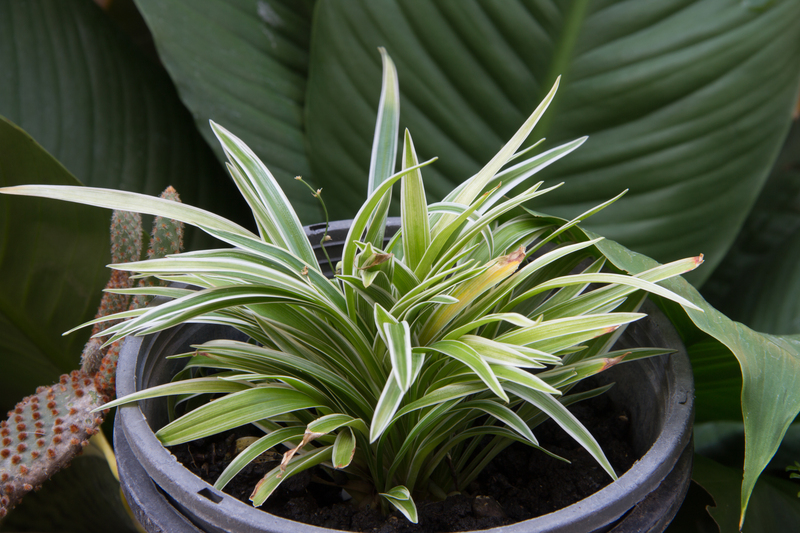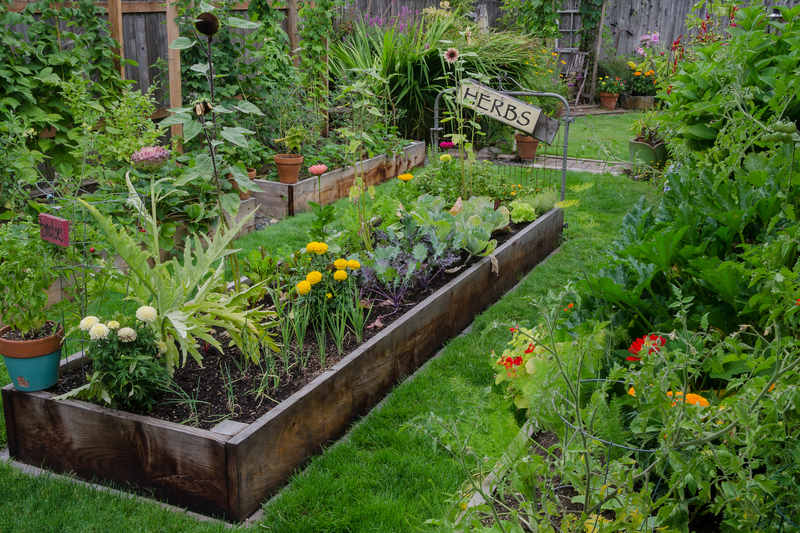Sow Seeds of Hope in the Battle Against Climate Change
Posted on 27/06/2025
Climate change remains the defining challenge of our times, threatening ecosystems, livelihoods, and future generations. Yet amid stories of devastation and despair, seeds of hope are being sown across the world. By exploring innovative solutions, nurturing positive change, and fostering collective action, we can build a more resilient and sustainable future. This comprehensive article delves into how sowing seeds of hope--literally and metaphorically--can help us battle climate change and why each of us has a crucial role to play.
Understanding the Battle: Why Hope Matters in the Climate Crisis
The reality of the climate crisis can feel overwhelming. News cycles are saturated with reports of record-breaking heatwaves, wildfires, floods, and crop failures. It's easy to feel powerless--but hope is a powerful antidote.
- Hope drives action. When people believe change is possible, they are more likely to take meaningful steps.
- Hope fosters resilience. In communities hardest hit by climate impacts, hopeful initiatives help people adapt and rebuild.
- Hope sparks innovation. Many of the world's most effective climate solutions began with a hopeful vision of a better world.
"Sowing seeds of hope" captures both the literal work of planting to restore degraded landscapes and the figurative act of inspiring optimism and determination. Let's explore how seeds--real and symbolic--are at the heart of the fight against climate change.

Planting Solutions: How Trees and Ecosystems Defend Our Planet
Why Planting Trees Is a Powerful Climate Solution
One of the most tangible ways to "sow seeds of hope in the battle against climate change" is by planting trees. Trees absorb carbon dioxide, one of the primary greenhouse gases fueling global warming. They also stabilize soils, replenish groundwater, and provide habitat for countless species.
- Carbon Sequestration: A mature tree can absorb up to 22 kg of CO? per year.
- Biodiversity: Forests are home to 80% of the world's terrestrial biodiversity.
- Resilience: Trees reduce the risk of natural disasters like floods and landslides.
Tree-planting programs, supported by communities, NGOs, and businesses, have restored millions of hectares worldwide. Some standout examples include:
- The Green Belt Movement in Kenya, founded by Nobel Laureate Wangari Maathai, which has planted over 50 million trees.
- The Great Green Wall of Africa, a bold plan to create a mosaic of green spaces across the Sahel to combat desertification and climate change.
- Global Reforestation Initiatives like Trillion Trees and Ecosia, the search engine that plants trees with every query.
Protecting Existing Forests: A Crucial Act of Hope
While planting new trees is essential, protecting existing forests delivers even greater benefits. Ancient forests store vast amounts of carbon, and their complex ecosystems are irreplaceable. Efforts such as tackling illegal logging, securing indigenous land rights, and enforcing conservation laws are vital in the ongoing war on climate change.
Beyond Trees: Sowing Seeds of Hope with Regenerative Agriculture
Farmers across the globe are embracing regenerative farming practices that restore soil health, increase biodiversity, and capture carbon. Techniques like cover cropping, permaculture, crop rotation, and agroforestry highlight humanity's ability to harmonize agriculture with nature.
- Cover Cropping: Planting a mix of plants between harvests reduces soil erosion and increases carbon storage.
- Agroforestry: Integrates trees into farms, improving yields, income, and habitats.
- Permaculture: Designs cultivate resilient agriculture systems modeled after natural ecosystems.
By adopting these approaches, farmers not only battle global warming but also improve food security and community livelihoods -- true seeds of optimism in action.
Innovative Seeds: Technology and Community Empowerment
The Power of Clean Technology
Technology is an ally in the battle against climate change. Advances in renewable energy, such as solar and wind power, are making it possible to phase out fossil fuels and reduce greenhouse gas emissions on an unprecedented scale. Meanwhile, entrepreneurs and scientists are developing breakthrough solutions--energy-efficient appliances, electric vehicles, carbon capture methods, and smart agriculture tools--that help individuals and communities reduce their environmental impact.
- Solar and Wind Energy: The cost of solar photovoltaic cells has fallen by 89% over the last decade, bringing clean energy to millions.
- Battery Innovations: New battery technologies enable better energy storage and more reliable renewable grids.
- Climate-Smart Agriculture: Data-driven systems help farmers optimize water use and minimize chemical inputs.
By supporting clean technologies, you are actively sowing seeds for a sustainable tomorrow.
Empowering Communities and Youth Leadership
Local communities and youth are at the vanguard of hopeful climate action.
From grassroots organizations to global movements like Fridays for Future, young people are mobilizing in unprecedented numbers to demand real change--both policy and practice. Empowering these voices with resources, education, and tools amplifies their impact.
- Community-Led Initiatives: Local groups lead tree-planting, river clean-ups, and energy cooperatives that prove small-scale efforts can scale to create global change.
- Climate Education: School and university curricula increasingly include climate literacy, sparking interest and preparing the next generation of leaders.
- Inclusive Action: Elevating marginalized communities ensures solutions are equitable and effective.
When communities are empowered, they become resilient. They turn hope into practical solutions that benefit both people and planet.
Individual Action: Sowing Seeds of Hope at Home
You don't need to be a politician or scientist to sow seeds of hope in the fight against climate change. Every individual has the power to contribute, inspire, and lead by example. Here are some practical steps anyone can take:
- Reduce, Reuse, Recycle: Consider your consumption patterns and opt for sustainable alternatives. Every bit counts.
- Plant a tree or native plants: Even a single tree can provide shade, improve air quality, and support insects and birds.
- Embrace sustainable eating: Eating more plant-based foods and reducing food waste significantly lowers your carbon footprint.
- Support eco-friendly initiatives: Choose brands and organizations that prioritize the environment. Volunteer for local environmental projects.
- Advocate: Use your voice--on social media or in your community--to raise awareness and push for political action.
Each step may seem small, but multiplied globally, individual actions sow immense seeds of hope and collective impact.
From Despair to Hope: Real-World Case Studies
Success Stories from Around the Globe
- Restoring Mangroves in Bangladesh: Coastal communities have replanted mangrove forests, shielding villages from rising tides and storms while storing huge amounts of carbon.
- Urban Green Spaces in Singapore: The city-state, once heavily urbanized, now features extensive green roofs, parks, and vertical gardens that mitigate heat and improve biodiversity.
- Land Restoration in Ethiopia: Large-scale land restoration initiatives have revived depleted highlands, improved water security, and increased crop yields for local farmers.
These inspiring case studies prove that concrete action nurtures possibility, transforming desolate lands into thriving habitats and communities.
The Seeds We Sow Today Define Tomorrow
Why Optimism Is a Climate Solution
Hope is contagious and transformative. When individuals, businesses, and communities sow seeds of hope--through simple actions, ambitious projects, or by refusing to give up--they shift the narrative from doom to possibility. The more we believe in our collective ability to avert catastrophe, the more likely we are to succeed.
Consider:
- More than 190 countries have signed the Paris Agreement, showing commitment to addressing global climate change.
- Cities around the world are moving toward 100% clean energy.
- Innovators are developing new ways to capture carbon, restore ecosystems, and empower the most vulnerable.
These facts highlight an undeniable truth: hope is not naive--it's strategic. It's the fuel for sustained engagement and innovation in the urgent mission to

Start Sowing Your Seeds of Hope Today
Action Steps and Resources
Ready to sow your own seeds of hope in the fight against global warming? Here are steps you can take:
- Plant Trees or Native Flora: Join local tree-planting initiatives or create pollinator gardens at home.
- Volunteer: Contribute your time to conservation projects, river clean-ups, or citizen science.
- Donate: Support organizations dedicated to rainforest protection, renewable energy, and sustainable agriculture.
- Learn and Share: Stay informed about climate solutions and share hopeful stories to inspire others.
- Advocate for Policy: Contact your elected officials and urge them to prioritize climate action and sustainability.
For more information and tools, consult resources such as:
- Trillion Trees Campaign
- United Nations Environment Programme
- World Wildlife Fund Climate Initiatives
Conclusion: A Future Worth Fighting For
Climate change poses immense challenges, but it also offers unprecedented opportunities for unity, creativity, and transformation. Sowing seeds of hope in the battle against climate change is more than a metaphor--it's a practical, powerful path forward. Whether you're planting a tree, championing innovation, or inspiring your community, you contribute to a profound, positive legacy.
The seeds we plant today--of trees, connection, innovation, and hope--will shape the world our children inherit. Together, by nurturing these seeds, we can grow a resilient and sustainable future, proving that hope is not only essential but inevitable. Join the movement. Sow seeds of hope. Be the change the planet needs.


